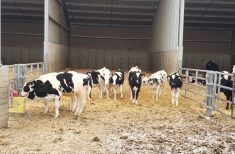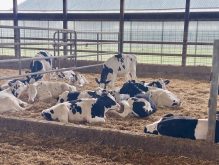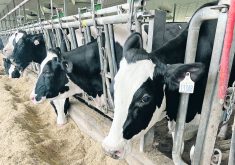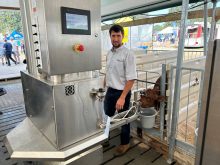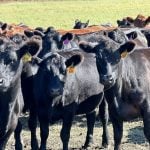The youngest calves on the farm are the most sensitive to different environmental temperatures.
In the case of cold weather and falling temperatures, producers can have problems managing morbidity, mortality and suboptimal growth rates, says Dr. Sarah Morrison, a research scientist with the William H. Miner Agricultural Research Institute in Chazy, N.Y.
She was the presenter at a recent webinar hosted by the Dairy Cattle Welfare Council, based at Ohio State University, that focused on cold weather management.
Read Also
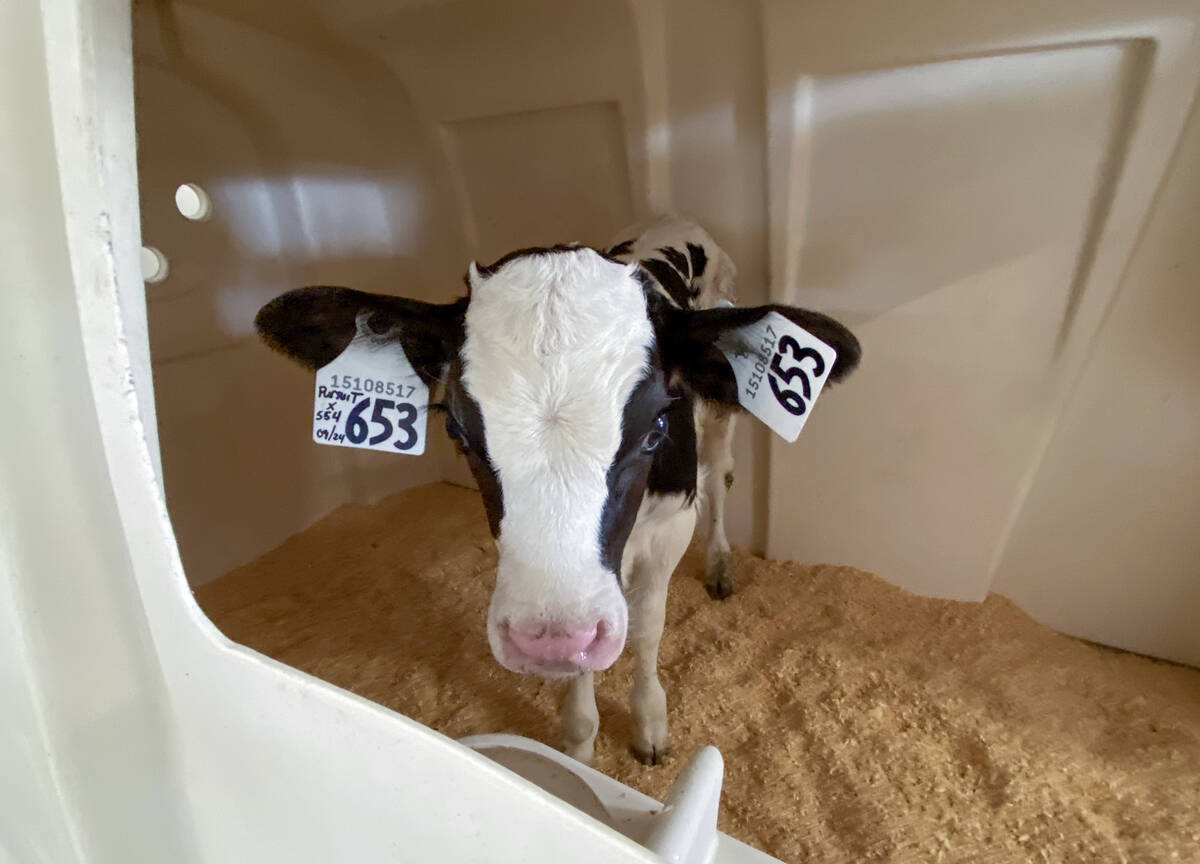
Lactanet turns methane expertise into business opportunity
Lactanet’s new fee-for-service breeding tool initiative to reduce greenhouse gas emissions in Canadian and Swiss Holstein herds will launch in April 2026.
Why it matters: Calf morbidity and mortality can be reduced in cold weather with attention to detail.
“If we can make changes to the nutrition and management of these animals during these weather conditions, we can set them up for success when they enter late lactation and through the rest of their heifer program,” said Morrison, whose research focuses on dairy calf nutrition and management.
To start, Morrison defined the term “cold stress” and what happens when calves experience a range of colder temperatures, particularly in the “thermal neutral zone” when they are trying to maintain body temperature.
In that zone, they don’t have to expend extra energy to help maintain body temperature, and for calves less than three weeks old, that’s a range between 15 C and 28 C.
“For calves less than three weeks of age, we really need to start talking about it when temperatures dip below 59 F (15 C),” said Morrison. “We often focus a lot in terms of cold stress or it’s more characterized in terms of temperature, but certainly precipitation, wind and other conditions can make it more challenging.”
She has studied several important factors that can stress calves during pre-weaning, including the effects of ventilation and the amount of fat provided on a daily basis in a liquid diet. With ventilation, calves housed in mechanically or cross-ventilated barns were at higher risk of illness during pre-weaning compared to those in naturally ventilated buildings.
As for the effect of fat in a liquid diet, Morrison cited an example of a calf fed one kilogram of solids per day from milk or milk replacer.
“If that milk replacer was 15 per cent fat, those calves were at a higher risk of dying in the pre-weaning period compared to calves that were fed a 22 per cent fat milk replacer or milk,” she said.
The goal in her calf programs is to double the birth body weight by 56 days of age.
“If we’re not able to do that because we don’t have energy left to meet that growth requirement, we can’t expect them to grow the same as if they were under thermal neutral conditions.”
Maintenance requirements will change with temperature, and vary depending on the calf size. Those also change as the animal ages. Morrison has done the calculations for an 88-pound calf starting at the lower range of the thermal neutral zone.
“In the north country where I am, we certainly get down into these colder temperatures,” she said. “As we go from 59 degrees Fahrenheit (15 C) to 32 degrees, that’s an increase of 35 per cent of her energy requirement just to meet maintenance. Once we get down into zero degrees Fahrenheit, that’s an increase of 82 per cent for that calf.”
Other factors
Newborn calves have approximately two per cent of body weight in brown adipose fat, which helps with non-shivering thermal regulation, but it’s a short-term reserve.
They also have a low surface-to-mass ratio and fairly poor insulation, which is why the intake of colostrum is so important. It provides immunoglobulins but also contains significant amounts of fat and protein and helps generate heat production in a calf.
Drying a newborn calf is another aspect that Morrison has studied. The goal between the time of birth and when a calf is dry needs to be minimized in cold weather because they take longer to stand, resulting in a loss of body heat.
That led to discussions about warm boxes, the temperature of mixed milk replacer and the thickness of straw used as bedding.
Although warm boxes are useful in drying calves, she noted, they are also efficient at producing bacteria, which means more care in cleaning newborns before they’re placed in one of those units.
Tracking temperatures at mixing and feeding was another consideration. Depending on the mixing guidelines of a milk replacer, the water temperatures may fall somewhere between 105 F (45.5 C) to 130 F (54 C). But if the milk replacer is cold when adding it to the water, it may significantly lower the temperature of the complete mixture.
“If you’re warming up whole milk, make sure it comes to the appropriate temperature at delivery,” said Morrison. “We want to make sure that each calf is getting an appropriate temperature so that the first, middle and last calf are all hitting that benchmark of above 105 F.”
The goal is to avoid the calf warming up the meal its consuming to meet body temperature. Instead, make sure it’s warmer than body temperature so the calf doesn’t have to expend extra energy to warm that meal.
A bed of straw
Keeping the calf off cold, wet concrete is another important factor in minimizing cold stress. According to Morrison, there should be at three inches of clean dry bedding between the calf and the floor. Wheat straw is a good option, allowing calves to create a pocket they can warm directly around them.
“To sum things up, we need to identify the increased maintenance costs to those animals and think about the factors we can hone in on to minimize those impacts so we’re setting our calves up for success,” said Morrison.







